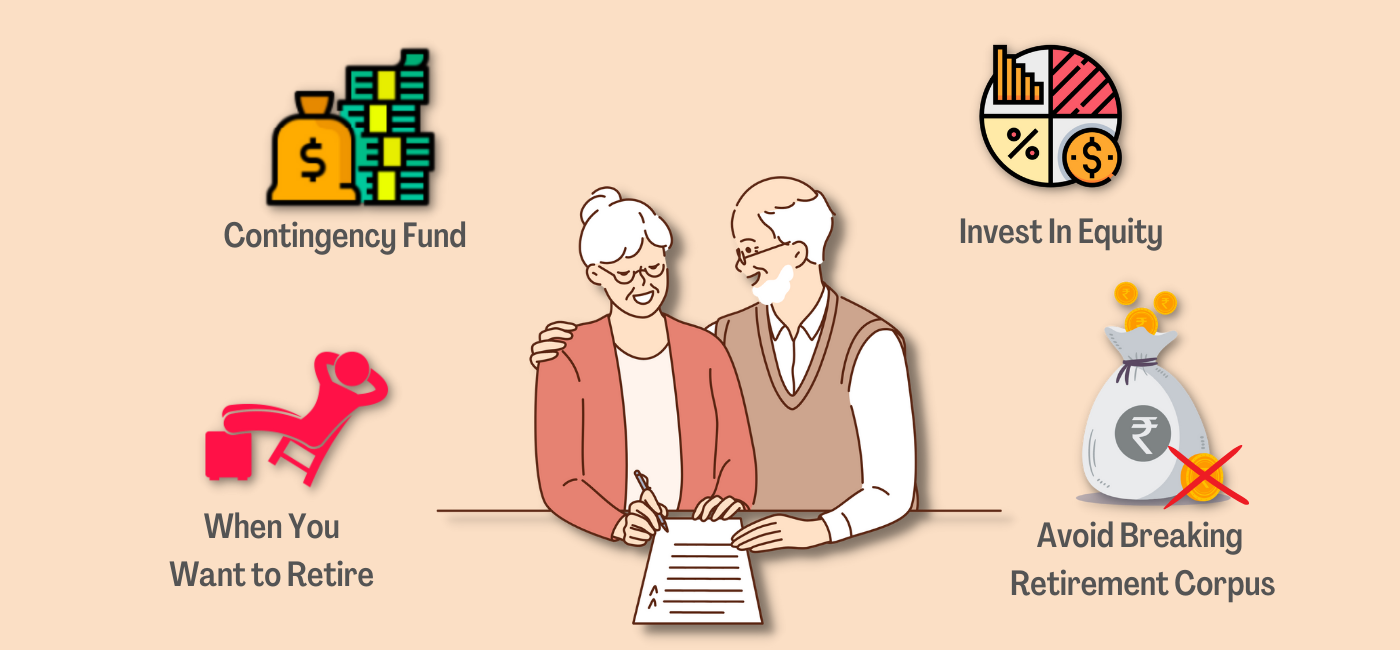Recently a friend called to know my opinion about investing in National Pension System (NPS) for tax savings. He told me that as he had exhausted all other options under 80C and 80D and still had some tax liability due he was exploring investing in National Pension System (NPS) for the first time.
“So, you are planning to invest 50k in N.P.S to save 15k in tax?” I asked him.
He replied “Yes, as my income is falling under the 30% tax bracket. Well, not just for saving tax, but for retirement planning too. What do you think?”
So we thought of taking an in-depth look at N.P.S, and its pros and cons.
What is NPS (National Pension System)?
National Pension System or N.P.S is a market-linked social security initiative backed by the Government of India. This pension scheme is voluntary and open to employees from the public, private, and unorganized sectors except for the armed forces. The NPS Scheme (National Pension System Scheme) is regulated by Pension Fund Regulatory and Development Authority (PFRDA and all assets under this scheme are owned by the National Pension System Trust (NPST).
Both resident and non-resident Indians (NRIs) between 18 to 65 years are eligible to join N.P.S. NRI contributions to the NPS Scheme are subject to RBI and FEMA regulatory requirements as prescribed from time to time.
Overseas Citizens of India (OCI), Persons of Indian Origin (PIO), and HUFs are not eligible for opening the N.P.S account.
N.P.S (National Pension System) is mandatory for all government employees who joined service after 1st January 2004. It is not mandatory for employees in the private sector. But, it is one way you can build a substantial corpus for retirement when there is a lack of adequate social security measures or post-retirement benefits in our country.
There are two types of N.P.S accounts – Tier 1 and Tier 2. While the Tier 1 type of National Pension System (NPS) account’s objective is to create a corpus for retirement corpus, Tier 2 account is like an investment account with more flexibility in terms of deposits and withdrawals similar to mutual fund investment.
Who Should Invest in National Pension System (NPS)?
National Pension System (NPS) is a good scheme for those who want to build a retirement corpus but have a low-risk appetite. Having a regular income (pension) after retiring is the best, especially for employees of the private and unorganized sectors. Starting early and investing systematically can make a large difference to your life once you retire. In fact, the salaried employees can set up an N.P.S account to make the most of the 80C and 80CCD deductions.
How To Set Up Your NPS account?
While registering for the National Pension System Scheme (NPS scheme), you must choose a Pension Fund Manager (PFM) and your scheme preference. Choose your preferred PFM from eight PFMs such as ICICI Prudential Pension Fund, LIC Pension Fund, Kotak Mahindra Pension Fund, Reliance Capital Pension Fund, SBI Pension Fund, UTI Retirement Solutions Pension Fund, HDFC Pension Management Company, and Birla Pension Fund to manage their investments in National Pension System (N.P.S).
National Pension System (N.P.S) offers four different types of funds for different investors depending on their risk profile, such as Ultra-safe, Conservative, Balanced and Aggressive.
- The asset mix of Ultra safe fund includes 60% in Gilt funds and 40% in Corporate bond funds
- Conservative fund investments are distributed among Gilt funds, Corporate bond funds,s and Equity in the ratio of 50%, 30%, and 20% respectively.
- In the Balanced fund, the investments are divided in a ratio of 33.3% each in Gilt funds, Corporate bond funds, and Equity.
- in the Aggressive fund, investments are divided among Gilt funds, Corporate bond funds, and Equity in the ratio of 20%, 30%, and 50% respectively.
You can get an additional deduction of Rs. 50,000 under Section 80CCD(1B) of income tax if you invest in National Pension System (N.P.S).
Pros of National Pension System (NPS)
- The National Pension System Scheme (NPS Scheme) is portable across jobs and locations with benefits available under Sec 80 and Sec 80CCD of income tax.
- The returns from N.P.S are much-higher compared to other fixed-income assets. Moreover, a part of your contribution is invested in equity. It has delivered 8-10% annualized returns for over a decade.
- Your risk appetite is based on your age. For example, if you are starting at age 20, then your equity exposure may be higher close to 60% of your contribution. The equity percentage will reduce by 2.5% every year starting at age 50. Such changes help to balance the risk-return equation.
- You can claim an NPS deduction of up to Rs. 1.5lakh for both your contribution and your employers under Sec 80CCD(1) and 80CCD(2) respectively.
- 60% of your retirement corpus can be withdrawn when you retire. This income is tax-free under the EEE (exempt, exempt, exempt) section.
- You can withdraw up to 25% of the amount early for higher studies, marriage, buying or building a house, or medical treatments if you have contributed regularly for 3 years after setting up the account. You can withdraw money thrice during the tenure but with a gap of five years from the last withdrawal.
Drawbacks of NPS
Highest lock-in period among all tax-saving instruments
Compared to all other tax-saving instruments, the NPS has a high lock-in period. You cannot withdraw your full corpus from NPS till age 60. On the other hand, tax-saving instruments like PPF, ELSS, EPF, NSC, etc., have a relatively lower lock-in period. ELSS has a 3-year lock-in period, EPF can be withdrawn after two months of being unemployed while PPF has a 15-year lock-in period for complete withdrawal. Partial withdrawals up to 50% of the balance are permitted in PPF after the completion of 5 years from account opening. Premature closure based on specific medical and educational grounds is also permitted in PPF after five financial years.
Taxation on Annuity
At age 60, i.e., on retirement, you can withdraw a lump sum of up to 60% of the fund available in his NPS account and invest the balance in an annuity plan. Annuities are insurance contracts that promise the buyer regular income either immediately or after a stipulated period.
Currently, there are 11 annuity service providers approved by PFRDA such as Life Insurance Corporation of India (LIC), HDFC Life Insurance Co. Ltd., ICICI Prudential Life Insurance Co. Ltd., SBI Life Insurance, Star Union Dai-ichi Life Insurance Co. Ltd., Bajaj Allianz Life Insurance Company Limited, Edelweiss Tokio Life Insurance Co. Ltd., India First Life Insurance Co. Ltd., Canara HSBC Oriental Bank of Commerce Life Insurance Co. Ltd., Kotak Mahindra Life Insurance Co. Ltd., and Max Life Insurance Co. Ltd.
An annuity in India is taxable. The balance of 40% invested in the annuity plan will not generate a tax-free pension for the investor. It does not make sense for a retired person to receive income that is taxable as it will reduce his/her overall income after retirement.
Low returns offered by annuity plans
Annuity rates currently offered by insurance companies in India are very low in the range of 5.5-6.5%. These annuity rates are even lower than interest rates banks offer to senior citizens. Interest rates in India are linked to RBI’s repo rate and are generally1-2% higher than the repo rate.
In the future, as India grows and transforms into a developed country from a developing country, the interest rates are likely to fall further. Interest rates in developed countries like the USA, UK, Canada, Japan, and Switzerland are currently meager in the range of 0.5 to 1.5%. So, it is quite natural that in India, as interest rates fall in the future, annuity rates will also take a further dip.
At current annuity rates of 5.5-6.5%, an investment of 1 crore rupees will generate a yearly annuity of just 5.5 to 6.5 lacs. Can you imagine what will happen after 20-25 years amid falling interest rates and rising inflation?
Yes, there is an annuity option called ‘Annuity for Life’ where the investor can choose a higher rate of annuity, but in that case, the investor’s nominee will not get anything on the investor’s death.
Let’s understand this with a real example of an immediate annuity product named LIC Jeevan Akshay Vll.
An investor will get a yearly annuity of Rs. 3,99,750 for an investment of Rs. 50,00,000 on choosing the annuity option -Annuity for Life. On the other hand, if the investor chooses the Annuity for Life with Return of Purchase Price, he or she would get a lower annuity amount of Rs. 2,72,250 for the same investment amount.
In the second case, as the name suggests, the investor’s nominee would get the amount invested back, i.e., Rs. 50,00,000 but must remain content with a lower annuity (difference of Rs. 1,27,500) during his lifetime.
Bottom line: Is it worth investing in National Pension System (NPS)?
Investing in National Pension System (NPS) is not a bad move when you consider that starting early with a small investment can help you build a large corpus for retirement. Moreover, you can also claim tax deductions in your IT returns. However, if you are looking to build wealth NPS should not be the only option you choose to invest in.
As per data available on Moneycontrol the five-year returns of various funds managed by different PFMs in NPS range between 5 to 11.80%. If you invest directly in equity, you can generate a much higher corpus for retirement because of the longer investment duration.
Historical data proves that stock markets are generally stable over the long term and have beaten all other asset classes in terms of returns. Investing in good-quality stocks, you can generate a return of 25-35% or even higher on your equity investments over ten years or more. Click here to invest in a portfolio of multibagger stocks with the potential to generate 4-5x returns in 5-6 years.
What’s the new proposed change in NPS (National Pension System)?
Read more: About Research and Ranking













